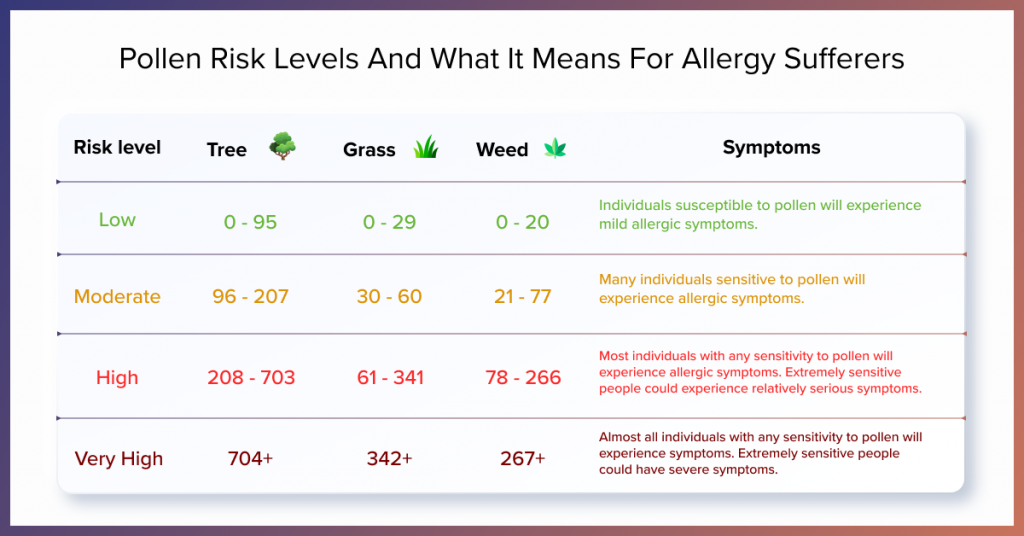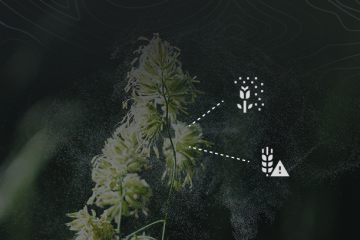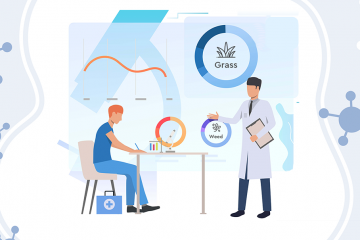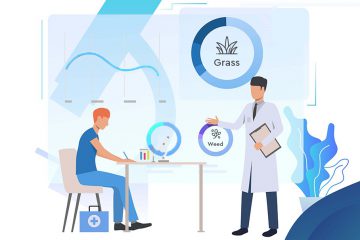Idea in brief:
- Climate change can lead to higher pollen concentrations and longer pollen seasons, causing more people to suffer from severe health effects from pollen allergens
- To help combat these issues, organizations are shifting their focus to data and technology
- By integrating Ambee’s environmental data companies can help their affected patients stay ahead of the pollen curve and better understand their immediate environment
With the onset of springtime, we all hope to spend our days out in the sun and enjoy the warmer weather. However, every year around springtime, pollen spores come out and wreak havoc on people in the form of itchy watery eyes, runny noses, and uncontrollable sneezing. Most people worldwide are hypersensitive to airborne pollen. It is a significant allergen that causes symptoms of seasonal allergic rhinitis, commonly known as hay fever, and affects people with existing respiratory ailments.
If you had an allergy-free season, consider yourself lucky. You are not among the millions of people who go through seasonal allergies every year. According to the American College of Allergy, Asthma, and Immunology (ACAAI), allergic rhinitis specifically affects between 10%-30% of the entire world population.
Climate change has the potential to lead to both higher pollen concentrations and longer pollen seasons. This will cause more people to suffer from severe health effects from pollen and other allergens. Centers for Disease Control and Prevention (CDC) estimated that medical costs linked with pollen exceed $3 billion every year, and nearly half of those costs are linked to prescription medicines.
Also read: How climate change affects pollen count
Pollen and Its Risk Levels
Pollen is the fertilizing agent of flora types such as flowering plants, trees, grasses, and weeds. Weather conditions like wind and humidity levels may affect pollen count in the air as they are small, light, and dry. They can easily be carried over long distances during windy days. They can also become damp and heavy with moisture, keeping them still and on the ground. Humid or rainy days trigger fewer allergic symptoms as compared to hot and dry weather due to their mobility.
The following table will help you better understand the risk level for different types of pollen. This table considers the National Allergy Bureau (NAB) guidelines and the extended season for each pollen type, giving you a list of the risk associated with pollen. The unit of measurement of pollen is pollen grains per cubic meter or PPM.

To help combat the issue of rising pollen allergies and the prolonged pollen season, health, pharmaceutical, and wellness organizations are shifting their focus to data and technology. With the help of organized big data and analytics, organizations can create future-ready technologies which will not only help customers reduce issues but avoid them altogether.
The only question that remains is how.
Historical Pollen Data: Analyze the Past for a Safer Future
Historical pollen data is the collection of the pollen count and levels from the past, usually gathered through various sources. Combining years of historical on-ground pollen station data with the geographical information and phenological factors that affect pollen, historical pollen data is generated. This pollen data from the past can help understand the pollen trends in the upcoming years. It can be utilized to generate forecasts, understand the trends in terms of species, and their occurrence time and location to help formulate plans to reduce its risks eventually.
Health and pharma companies can utilize historical pollen data to understand the risks for their customers and create a suitable solution to minimize those risks.
Real-Time Pollen Data: Optimize Personalized Healthcare for a Better Patient Experience
Real-time pollen data is generated by processing large amounts of data from various sources and comparing different forecast methodologies. These machine learning (ML) models can predict when the allergy season might hit specific locations. To ensure reliable and health-focused daily pollen reporting, the data generated can be personalized for individual users.
By integrating new forms of environmental intelligence based on the comprehensive data collection and sorting models, existing insights can be strengthened to deliver far more extensive and reliable information. Real-time and accurate pollen data can help healthcare and pharmaceutical industries move beyond traditional methods of patient care and create a personalized patient experience. Modern technology has given them tools to combine the real-time pollen updates according to the specialized patient requirements and optimize the process to their necessities.
Real-time data can also be utilized in health apps to alert an individual or a group to stay clear of a particular location. With simple monitoring of pollen count and constant medical advice, mild allergic symptoms can be managed easily, and severe ones can be reduced to a great extent.
Pollen Forecast Data: Stay Ahead of the Pollen Curve
When dealing with any kind of allergy, it’s essential to understand the composition of the air one breathes. Being aware of the times that pollen might trigger the allergy symptoms means the patients can take action to manage the seasonal allergies.
The pollen forecast shows the pollen count in the selected location for the next few days. Pollen forecast data can help individuals plan the next few days, especially any outdoor activity.
With precise forecast data, healthcare companies can provide timely warnings and alerts about the increase in the pollen count. Accurate forecast data can help organizations deliver value to their customers through insights, alerts, and forecast metrics. They can also send regular reminders and alerts based on upcoming pollen activity. This helps their affected patients stay ahead of the pollen curve and better understand their immediate environment.
Technology for a Healthier World
The evolution of pollen-related technology has the ability to create a real change in the lives of millions of people who are affected by pollen. Using hyperlocal and accurate pollen data, people can manage the risks associated with pollen with greater ease than ever before.
Pollen data can be used across industries for various purposes. Healthcare and pharma companies can use historical, real-time, and forecast data to create an optimal patient experience for their customers. Advertising and marketing companies can also utilize this data to develop valuable campaigns to raise pollen awareness and get their intended message across. Similarly, pollen data can help insurance and risk management organizations to analyze future risks and plan their operations accordingly.
Ambee’s pollen API was designed with this in mind—providing organizations with the tools necessary to help people lead healthier lives.

A creative writer from the heart, a content writer by profession. I spend most of my time reading about something if I’m not outside discovering it. I’m a nature lover and an environmental enthusiast. I believe that every human has a social responsibility to protect the environment they live in, and we must all play our part, however small it may be.





